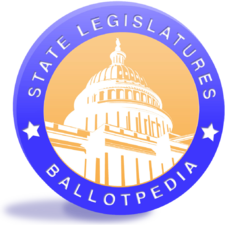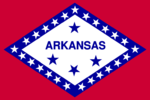Impact of term limits on state senate elections in 2012
2014 →
← 2011
|
| Term Limits |
|---|
| Impact of Term Limits by Year |
| 2010 • 2011 • 2012 • 2014 |
| State senates |
| Arizona • Arkansas • California Colorado • Florida • Maine Missouri • Montana Nebraska • Nevada • Ohio Oklahoma • South Dakota |
| State houses |
| Arizona • Arkansas • California Colorado • Florida • Maine Michigan • Missouri • Montana Nevada • Ohio Oklahoma • South Dakota |
| State legislatures with term limits |
| Term limits on the ballot |
Elections of state senators in 13 states with state legislative term limits took place on November 6, 2012. The 13 states where state legislative elections were impacted by term limits was close to 30% of the 43 states where state legislative elections of upper house members took place in 2012.
15 states have state legislative term limits, but Louisiana and Michigan did not hold a state senate election in 2012.
In 2012, 83 current state senators were ineligible to run for re-election because of term limits.
This included:
- 35 incumbent Democrats
- 40 incumbent Republicans
- 8 incumbent Non-Partisans
These 83 represent 25.3% of the 328 total senate seats up for election in the 13 states with term limits that held elections in 2012.
Differential impact on parties
Going into the 2012 elections, the Democratic Party was the majority party in 4 of the 13 state senates with term limits. The Republican Party was the majority in 8 of the 13 state senates with term limits. Nebraska's state senate is term-limited and officially Nonpartisan.
- In 5 states, more Republicans were term-limited out than Democrats. In all of these states, the majority party was Republican. These states included Arizona, Florida, Missouri, Ohio, and South Dakota.
- In 4 states, more Democrats were term-limited out than Republicans. In Arkansas, California, and Colorado, the majority party was Democratic. In Montana, the majority party was Republican.
- In 3 states, equal numbers of Republicans and Democrats were term-limited in November 2012. In Maine and Oklahoma, the majority party was Republican. In Nevada, the majority party was Democratic.
Senates with elections
Note: The figures in Column 5 ("Seats impacted by term limits") only reflects current members of state senates who were unable to run for re-election to their state's senate in 2012 because of term limits. In some cases, state senators who would have been unable to run for re-election in November resigned earlier in the year. Senators who resigned, and were not current members of their state senates, were not counted in these figures.
| Senate with limits | Majority party | Seats in senate | Up for election in 2010 | Seats impacted by term limits | Party with most losses |
|---|---|---|---|---|---|
| Arizona: (Senate), (2012 elections) | 30 | 30 | 0 |
||
| Arkansas: (Senate), (2012 elections) | 35 | 35 | 7 |
||
| California: (Senate), (2012 elections) | 40 | 20 | 5 |
||
| Colorado: (Senate), (2012 elections) | 35 | 16 | 4 |
||
| Florida: (Senate), (2012 elections) | 40 | 40 | 3 |
||
| Maine: (Senate), (2012 elections) | 35 | 35 | 5 |
||
| Missouri: (Senate), (2012 elections) | 34 | 17 | 2 |
||
| Montana: (Senate), (2012 elections) | 50 | 25 | 5 |
||
| Nebraska: (Senate), (2012 elections) | 49 | 25 | NA | ||
| Nevada: (Senate), (2012 elections) | 21 | 10 | 2 |
||
| Ohio: (Senate), (2012 elections) | 33 | 16 | 0 |
||
| Oklahoma: (Senate), (2012 elections) | 48 | 24 | 1 |
||
| South Dakota: (Senate), (2012 elections) | 35 | 35 | 1 |
||
| Totals: | (4) |
523 | 328 | 35 |
4 |
States
 Arizona
Arizona
- See also: Arizona State Senate elections, 2012
All of Arizona's 30 state senate seats were up for election on November 6. Arizona senators serve two-year terms with a four-term/eight-year limit that was imposed by Proposition 107 in 1992. Arizona's term limits apply to parts of terms and not just full terms. One state senator in 2010, Albert Hale, was affected by this provision of Arizona's law.
In the 2012 state senate elections, 2 senators, or 6.7% of the total senate seats, (0 Democratic state senators and 2 GOP state senators) could not run for re-election.
In addition to the 2 state senators who left office because of Arizona's term limits, 5 state representatives were also termed-out.
The state senators who were term-limited in 2012 are:
Democrats (0):
None
Republicans (2):
 Arkansas
Arkansas
- See also: Arkansas State Senate elections, 2012
The Arkansas State Senate has been a term-limited state senate since Arkansas voters approved the Arkansas Term Limits Initiative in 1992 as an initiated constitutional amendment.
There are 35 Arkansas State Senators, all of whom were up for re-election in November. In 2012, 10 of them who were current members, or 28.6% of the total senate seats, (7 Democratic state senators and 3 Republican state senators) were ineligible to run for the senate again in November.
In addition to the 10 state senators who left office because of Arkansas' term limits, 23 state representatives were also termed-out.
The state senators who were term-limited in 2012 are:
Democrats (7):
Republicans (3):
 California
California
- See also: California State Senate elections, 2012
The California State Senate has been a term-limited state senate since California voters approved Proposition 140 in 1990. Under the terms of Proposition 140, California's senators can serve no more than two 4-year terms in the state senate. This is a lifetime limit, as is the case in five other states with state senatorial term limits.
There are 40 California State Senators. In 2012, 9 who were current members, 22.5% of the total senate seats, were ineligible to run for the senate again in November. Of them, 5 were Democratic and 4 were Republican.
In addition to the 9 state senators who left office because of California's term limits, 21 state representatives were also termed-out.
The state senators who were term-limited in 2012 are:
Democrats (4):
Republicans (2):
 Colorado
Colorado
- See also: Colorado State Senate elections, 2012
The Colorado State Senate has been a term-limited state senate since Colorado voters approved Issue 5 in 1990. The affirmative vote by Colorado's electorate in Issue 5 altered Section 3 of Article V on the Colorado Constitution to say that Colorado State Senators could serve no more than two 4-year terms in office.
There are 35 Colorado State Senators. In 2012, 6 who were current members, or 17.1% of the total senate seats, were ineligible to run for the senate again in November. Of them, 4 were Democratic state senators and 2 were Republican state senators.
In addition to the 6 state senators who left office because of term limits, 9 state representatives were also termed-out.
The 6 current members of the state senate who were ineligible to run in November are:
Democrats (4):
Republicans (2):
 Florida
Florida
- See also: Florida State Senate elections, 2012
The Florida State Senate has been a term-limited state senate since Florida voters approved Amendment 9 in 1992. Amendment 9 altered Article VI, section 4 of the Florida Constitution to impose a maximum of two 4-year terms on Florida State Senators.
There are 40 Florida State Senators. In 2012, 9 who were current members, or 22.5% of the total senate seats, were ineligible to run for the senate again in November. Of them, 2 were Democratic state senators and 7 were Republican state senators.
In addition to the 9 state senators who left office because of term limits, 12 state representatives were also termed-out.
The 9 current members of the state senate who were ineligible to run in November are:
Democrats (2):
Republicans (7):
 Maine
Maine
- See also: Maine State Senate elections, 2012
The Maine State Senate has been a term-limited state senate since Maine voters approved Question 1 in 1993. Under this law, state senators can serve no more than four consecutive 2-year terms. The Maine State Legislature tried, unsuccessfully, in 2007 to get the state's voters to extend the number of years they could consecutively serve in office by putting the Maine Term Limits Extension act on the ballot. Voters overwhelmingly (67-33%) rejected it.
There are 35 Maine State Senators. In 2012, 10 who were current members, or 28.6% of the total senate seats, were ineligible to run for the senate again in November. Of them, 5 were Democratic state senators and 5 were Republican state senators.
In addition to the 10 state senators who left office because of term limits, 26 state representatives were also termed-out.
The 10 current members of the state senate who were ineligible to run in November are:
Democrats (5):
Republicans (5):
 Missouri
Missouri
- See also: Missouri State Senate elections, 2012
The Missouri State Senate has been a term-limited state senate since Missouri voters approved Amendment 13 in 1992. Amendment 13 created Section 8 of Article III of the Missouri Constitution, limiting state senators to 2 4-year terms. This is a lifetime limit, as is the case in 5 other states with state legislative term limits. Section 8 was later amended by Amendment 3 in 2002 so that it does not apply to partial terms.
Altogether, there are 34 Missouri State Senators. In 2012, 9 of them who were current members, or 26.5% of the total senate seats, were ineligible to run for the senate again in November. Of them, 2 were Democratic state senators and 7 were Republican state senators.
In addition to the 9 state senators who left office because of term limits, 25 state representatives were also termed-out.
The 9 current members of the state senate who were ineligible to run in November are:
Democrats (2):
Republicans (7):
 Montana
Montana
- See also: Montana State Senate elections, 2012
The Montana State Senate has been a term-limited state senate since Montana voters approved CI-64 in 1992. C-64 created Section 8 of Article IV of the Montana Constitution, which says that Montana State Senators cannot serve 8 or more years in any 16-year period as a state senator.
Altogether, there are 50 Montana State Senators. In 2012, 8 of them who were current members, or 16% of the total senate seats, were ineligible to run for the senate again in November. Of them, 5 were Democratic state senators and 3 were Republican state senators.
In addition to the 8 state senators who left office because of term limits, 16 state representatives were also termed-out.
The eight current members of the state senate who were ineligible to run in November are:
Democrats (5):
Republicans (3):
 Nebraska
Nebraska
- See also: Nebraska State Senate elections, 2012
The Nebraska State Senate has been a term-limited state senate since Nebraska voters approved Initiative 415 (2000). Under the terms of Initiative 415, Nebraska's senators can serve no more than two consecutive 4-year terms in the state senate.
There are 49 Nebraska State Senators. In 2012, 9 current members, or 18.4% of the total senate seats, are ineligible to run for the senate again in November. Members of the Nebraska Unicameral are nonpartisan. The senators ineligible to run for re-election are:
Non-Partisan (9):
 Nevada
Nevada
- See also: Nevada State Senate elections, 2012
Nevada voters approved Question 9A in 1996. Question 9A was a second vote on a term limits amendment first approved in 1994. Alone among the states with ballot initiatives, Nevada voters must approve a proposed constitutional amendment twice before it goes into the Nevada Constitution. The 1994 and 1996 votes cumulatively led to Paragraph 2 of Section 4 of Article 4 of the Nevada Constitution, which says, "No person may be elected or appointed as a Senator who has served in that Office, or at the expiration of his current term if he is so serving will have served, 12 years or more, from any district of this State."
Altogether, there are 21 Nevada State Senators. In 2012, 4 of them who were current members, or 19% of the total senate seats, were ineligible to run for the senate again in November. Of them, 2 were Democratic state senators and 2 were Republican state senators.
In addition to the 4 state senators who left office because of term limits, 1 state representative is also termed-out.
The 4 current members of the state senate who were ineligible to run in November are:
Democrats (2):
Republicans (2):
 Ohio
Ohio
- See also: Ohio State Senate elections, 2012
The Ohio State Senate has been a term-limited state senate since Ohio voters approved Ballot Issue 4, an initiated constitutional amendment, in 1992. This amendment became part of Section 2 of Article II of the Ohio Constitution and limits the amount of time that an Ohio State Senator can stay in office to two 4-year terms, saying, "No person shall hold the office of State Senator for a period longer than two successive terms of four years." Senators can run for office again after being out-of-office for at least a four-year period.
There are 33 Ohio State Senators. In 2012, 1 of them who was a Republican current member, or 3.03% of the total senate seats, was ineligible to run for the senate again in November.
In addition to the 1 state senator who left office because of term limits, 6 state representatives were also termed-out.
The 1 current member of the state senate who were ineligible to run in November was:
Democrats (0):
There were no Democratic senators termed-out in 2012.
Republicans (1):
 Oklahoma
Oklahoma
- See also: Oklahoma State Senate elections, 2012
The Oklahoma State Senate has been a term-limited state senate since Oklahoma voters approved State Question 632 in 1990, as an initiated constitutional amendment. This amendment became part of Section 17A of Article V of the Oklahoma Constitution and limits the amount of time that an Oklahoma State Senator can serve to a cumulative total of 12 years in either or both chambers of the Oklahoma State Legislature.
Altogether, there are 48 Oklahoma State Senators. In 2012, 2 of them who were current members, or 4.2% of the total senate seats, were ineligible to run for the senate again in November. Of them, 1 is a Democratic state senator and 1 is a Republican state senator.
In addition to the 2 state senators who left office because of term limits, 6 state representatives were also termed-out.
The 2 current members of the state senate who were ineligible to run in November are:
Democrats (1):
Republicans (1):
 South Dakota
South Dakota
The South Dakota State Senate has been a term-limited state senate since South Dakota voters approved Ballot Issue A in 1992, an initiated constitutional amendment. This amendment became part of Section 6 of Article III of the South Dakota Constitution and limits the amount of time that a South Dakota State Senator can stay in office to no more than four consecutive 2-year terms.
The South Dakota State Legislature has tried on more than one occasion, each time unsuccessfully, to persuade the state's voters to repeal term limits. The most recent such failed attempt was when Amendment J lost in 2008 by 75-25%.
Altogether, there are 35 South Dakota State Senators. In 2012, 3 of them who were current members, or 8.6% of the total senate seats, were ineligible to run for the senate again in November. Of them, 1 is a Democratic state senator and 2 were Republican state senators.
In addition to the 3 state senators who left office because of term limits, 7 state representatives were also termed-out.
The 3 current members of the state senate who were ineligible to run in November are:
Democrats (1):
Republicans (2):
See also
- State legislatures with term limits
- Impact of term limits on state representative elections in 2012
- Impact of term limits on state legislative elections in 2012
Footnotes
| |||||||||||














